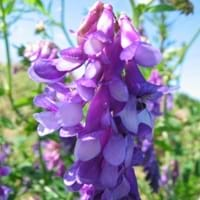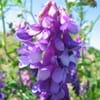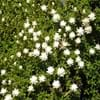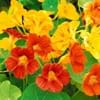Life Span
Annual and Biennials
Perennial
Type
Flowering Plants
Shrub
Origin
Europe, Asia
Eastern Asia, Japan
Types
Vicia ambigua, Vicia eriocarpa, Vicia microphylla
Not Available
Number of Varieties
Not Available
Habitat
Cultivated Beds, Waste areas
Old fields, stream banks
USDA Hardiness Zone
Not Available
4-8
Sunset Zone
Not Available
A3, 2b, 3a, 3b, 4, 5, 6, 7, 8, 9, 10, 11, 12, 13, 14, 15, 16, 17, 18, 19, 20, 21, 22, 23, 24
Habit
Prostrate/Trailing
Oval or Rounded
Flower Color
White, Purple
Yellow, Yellow green
Flower Color Modifier
Bicolor
Not Available
Fruit Color
Not Available
Red orange
Leaf Color in Spring
Green, Light Green
Light Green
Leaf Color in Summer
Green, Light Green
Green
Leaf Color in Fall
Green, Light Green, Yellow green
Purple, Orange, Burgundy, Crimson
Leaf Color in Winter
Light Green
Not Available
Leaf Shape
Pinnate
Obovate
Plant Season
Spring, Summer
Spring, Summer, Fall, Winter
Sunlight
Full Sun, Partial Sun
Full Sun, Partial Sun
Growth Rate
Very Fast
Medium
Type of Soil
Clay, Loam, Sand
Clay, Loam, Sand
The pH of Soil
Acidic, Neutral, Alkaline
Acidic, Neutral, Alkaline
Soil Drainage
Average
Average
Bloom Time
Late Spring, Early Summer, Summer
Spring, Late Spring
Tolerances
Drought, Shade areas
Pollution, Drought, Salt, Soil Compaction
Where to Plant?
Ground
Ground, Pot
How to Plant?
Seedlings
Seedlings
Plant Maintenance
Low
Medium
Watering Requirements
Needs less watering
Requires regular watering during dry weather
In Summer
Less Watering
Lots of watering
In Spring
Less Watering
Moderate
In Winter
Less Watering
Average Water
Soil pH
Acidic
Acidic, Neutral, Alkaline
Soil Type
Clay, Sandy
Clay, Loam, Sand
Soil Drainage Capacity
Clay, Sandy
Average
Sun Exposure
Full Sun, Partial Sun
Full Sun, Partial Sun
Pruning
Remove damaged leaves, Remove dead branches, Remove dead leaves
Remove damaged leaves, Remove dead branches, Remove dead leaves
Fertilizers
Calcium Sulphate, Phosphorous
All-Purpose Liquid Fertilizer
Pests and Diseases
No serious insect or disease problems, Pests and diseases free
Red blotch, Sunken patches
Plant Tolerance
Drought, Shade areas
Drought
Flowers
Showy
Insignificant
Flower Petal Number
Single
Single
Foliage Texture
Fine
Medium
Foliage Sheen
Matte
Matte
Allergy
Toxic
Not Available
Aesthetic Uses
Bouquets
Borders
Beauty Benefits
Not Available
Not Available
Environmental Uses
Fixes Nitrogen, Provides ground cover
Air purification
Medicinal Uses
Not Available
Anthelmintic, Antibacterial, Antiseptic, Cancer
Part of Plant Used
Leaves, Seeds
Fruits, Leaves
Other Uses
As a tea substitute, useful as a ground cover
Used to make yellow dye
Used As Indoor Plant
No
No
Used As Outdoor Plant
Yes
Yes
Garden Design
Edible, Groundcover
Edging, Foundation, Hedges, Mixed Border, Rock Garden, Wall
Botanical Name
VICIA villosa
BERBERIS thunbergii
Common Name
Fodder Vetch, Hairy Vetch
Japanese Barberry
In Hindi
hairy vetch
Japanese Barberry
In German
Zottelwicke
Thunberg-Berberitze
In French
vesce velue
Berberis thunbergii
In Spanish
veza
Berberis thunbergii
In Greek
τριχωτό βίκος
Japanese Barberry
In Portuguese
ervilhaca peluda
Japanese Barberry
In Polish
owłosione wyki
Berberys Thunberga
In Latin
pea
Japanese Barberry
Phylum
Magnoliophyta
Magnoliophyta
Class
Magnoliopsida
Magnoliopsida
Order
Fabales
Ranunculales
Family
Fabaceae
Berberidaceae
Clade
Angiosperms, Eudicots, Rosids
Angiosperms, Eudicots
Tribe
Vicieae
Not Available
Subfamily
Faboideae
Not Available
Number of Species
Not Available
Season and Care of Hairy Vetch and Japanese Barberry
Season and care of Hairy Vetch and Japanese Barberry is important to know. While considering everything about Hairy Vetch and Japanese Barberry Care, growing season is an essential factor. Hairy Vetch season is Spring and Summer and Japanese Barberry season is Spring and Summer. The type of soil for Hairy Vetch is Clay, Loam, Sand and for Japanese Barberry is Clay, Loam, Sand while the PH of soil for Hairy Vetch is Acidic, Neutral, Alkaline and for Japanese Barberry is Acidic, Neutral, Alkaline.
Hairy Vetch and Japanese Barberry Physical Information
Hairy Vetch and Japanese Barberry physical information is very important for comparison. Hairy Vetch height is 30.00 cm and width 60.00 cm whereas Japanese Barberry height is 90.00 cm and width 120.00 cm. The color specification of Hairy Vetch and Japanese Barberry are as follows:
Hairy Vetch flower color: White and Purple
Hairy Vetch leaf color: Green and Light Green
Japanese Barberry flower color: Yellow and Yellow green
- Japanese Barberry leaf color: Light Green
Care of Hairy Vetch and Japanese Barberry
Care of Hairy Vetch and Japanese Barberry include pruning, fertilizers, watering etc. Hairy Vetch pruning is done Remove damaged leaves, Remove dead branches and Remove dead leaves and Japanese Barberry pruning is done Remove damaged leaves, Remove dead branches and Remove dead leaves. In summer Hairy Vetch needs Less Watering and in winter, it needs Less Watering. Whereas, in summer Japanese Barberry needs Lots of watering and in winter, it needs Average Water.





